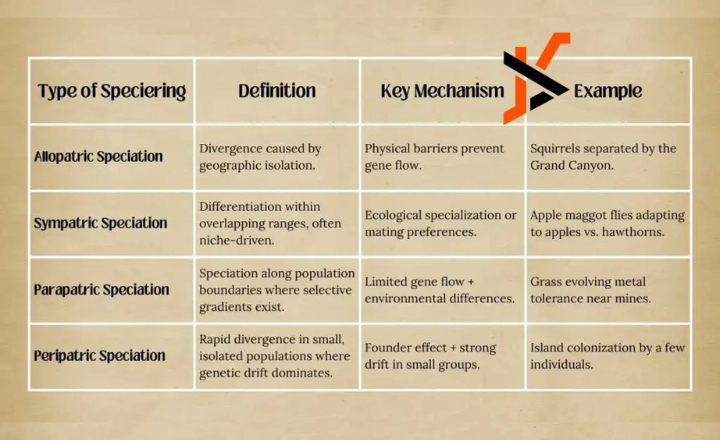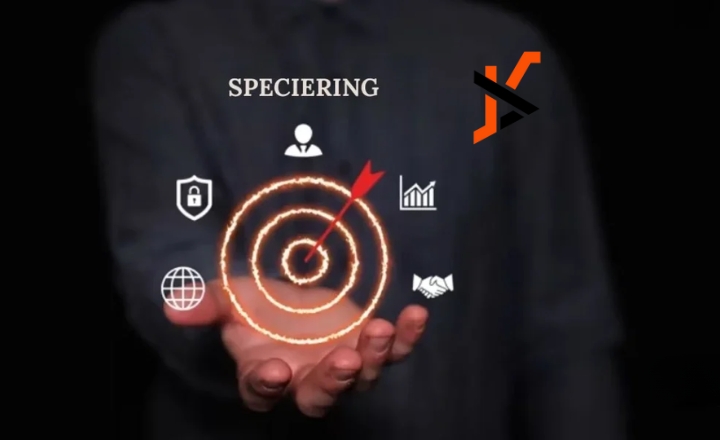In the rich tapestry of life on Earth, the process of speciering plays a critical role in shaping the biodiversity we observe today. This term, often used in biological and ecological contexts, refers to the evolutionary process through which new species arise. It encompasses various mechanisms and theories that explain how species diverge, adapt, and thrive in different environments.
As we delve into the concept of speciering, we will explore its significance, the mechanisms involved, and the broader implications for ecosystems and conservation efforts.
The Mechanisms of Speciering
Speciering is fundamentally about the formation of new species, which can occur through several mechanisms, including allopatric, sympatric, parapatric, and peripatric speciation. Each of these processes highlights different aspects of how species can evolve and adapt to their environments.
- Allopatric Speciation: This is perhaps the most well-known mechanism, occurring when populations of a species become geographically isolated. Over time, these isolated populations experience different selective pressures, leading to genetic divergence. For example, when a river changes course or a mountain range forms, the populations on either side may evolve independently, eventually leading to the emergence of distinct species.
- Sympatric Speciation: Unlike allopatric speciation, sympatric speciation occurs without geographical barriers. Instead, it is often driven by behavioral differences, ecological niches, or reproductive isolation within the same habitat. For instance, in a lake, two fish species may evolve to occupy different depths or feeding zones, leading to speciation even in the absence of physical separation. This mechanism highlights how ecological interactions and preferences can foster the emergence of new species.
The Role of Genetic Variation

At the core of speciering is genetic variation, which acts as the raw material for evolution. Natural selection, genetic drift, and mutation all contribute to the genetic diversity within populations, influencing how they adapt and evolve over time.
- Natural Selection: This process favors individuals with traits that enhance their survival and reproductive success in a given environment. Over generations, these advantageous traits become more common within the population, potentially leading to speciation. For example, a population of insects might develop resistance to a pesticide, ultimately resulting in a new species adapted to thrive in these altered conditions.
- Genetic Drift: Particularly in small populations, genetic drift can result in random changes in allele frequencies over time. This can lead to significant genetic divergence between populations, especially if they are subject to different environmental pressures. The founder effect, where a small group establishes a new population, is a classic example of how genetic drift can influence speciering.
The Importance of Speciering in Biodiversity
The process of speciering is vital for maintaining and enhancing biodiversity within ecosystems. Each new species contributes to the complexity and functionality of ecological communities, playing unique roles that promote resilience and stability.
- Ecosystem Services: Biodiversity, shaped by speciation events, underpins ecosystem services that are crucial for human survival, including pollination, nutrient cycling, and water purification. A diverse array of species can better respond to environmental changes, ensuring that ecosystems remain productive and resilient in the face of stressors such as climate change, habitat destruction, and pollution.
- Niche Differentiation: As species evolve through speciering, they often occupy different ecological niches, reducing competition and allowing for more efficient resource use. This niche differentiation promotes greater overall biodiversity, as multiple species can coexist by utilizing resources in complementary ways. For instance, in a forest, different bird species may forage at various heights, allowing them to exploit distinct food sources without directly competing with one another.
Conservation Implications
Understanding the mechanisms and significance of speciering has profound implications for conservation efforts. As human activities continue to threaten biodiversity, recognizing the importance of protecting species and their habitats becomes paramount.
- Protecting Genetic Diversity: Conservation strategies that prioritize genetic diversity within populations can enhance the resilience of species to changing environmental conditions. By maintaining healthy populations with a wide range of genetic variation, we can support the ongoing processes of speciering and adaptation.
- Habitat Preservation: To facilitate the natural processes of speciation, it is essential to protect and restore habitats that support diverse ecosystems. This includes safeguarding areas that provide the necessary conditions for allopatric and sympatric speciation to occur, ensuring that species have the opportunity to evolve and adapt in response to environmental changes.
The Future of Speciering and Biodiversity

As we look to the future, the process of speciering faces unprecedented challenges due to climate change and habitat loss. These factors can disrupt the delicate balance of ecosystems, potentially hindering the emergence of new species.
- Shifts in Habitats: Climate change is causing shifts in habitats and altering the conditions under which species thrive. As temperatures rise, species may be forced to migrate to cooler areas, leading to increased competition and challenges in finding suitable environments for reproduction. This can impact the processes of speciation, as populations may struggle to adapt to rapidly changing conditions.
- Extinction Risks: The loss of habitat and the inability to adapt to new environmental pressures increase the risk of extinction for many species. With fewer species existing, the opportunities for speciering diminish, leading to a decline in biodiversity. Conservation efforts must prioritize addressing climate change and protecting habitats to ensure the survival of diverse species and the continuation of speciation processes.
Conclusion
In summary, speciering is a fundamental process that underpins the diversity of life on Earth. Through mechanisms such as allopatric and sympatric speciation, species arise and adapt to their environments, enhancing the resilience and functionality of ecosystems. The importance of speciering extends beyond biological interest; it has profound implications for conservation, ecosystem services, and the future of biodiversity in the face of environmental change.
As we confront the challenges posed by climate change, habitat loss, and biodiversity decline, understanding and supporting the processes of speciering is crucial for preserving the rich tapestry of life on our planet. By prioritizing conservation efforts that protect genetic diversity and restore habitats, we can foster a more resilient and biodiverse future, ensuring that the processes of speciation continue to shape the world for generations to come.

